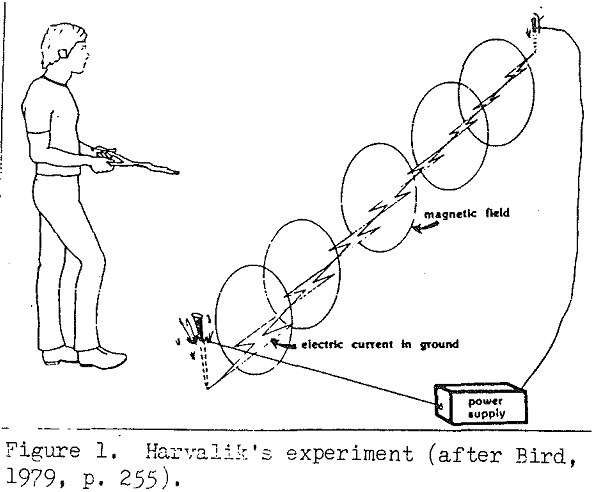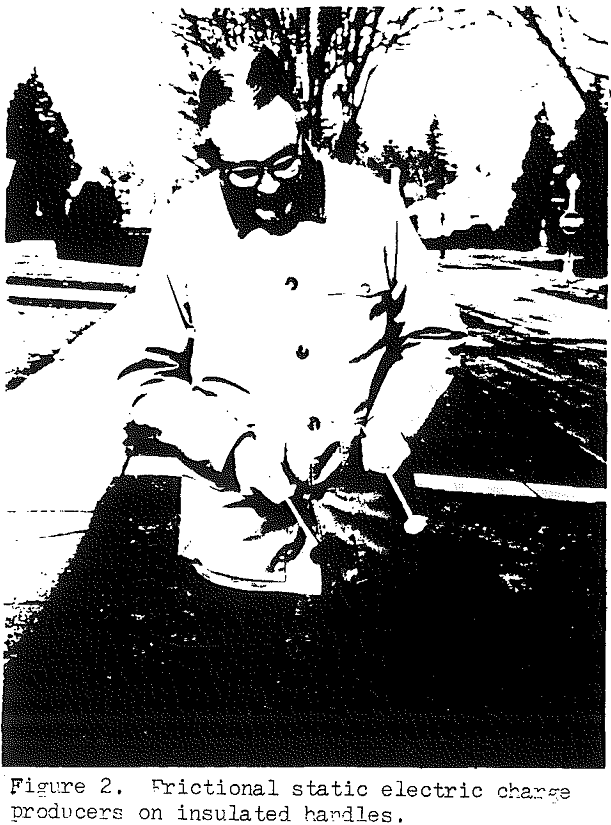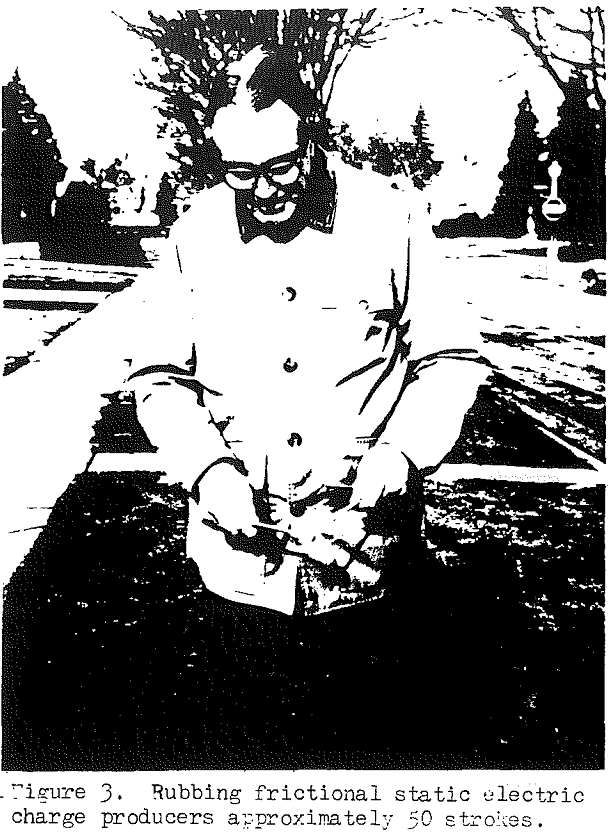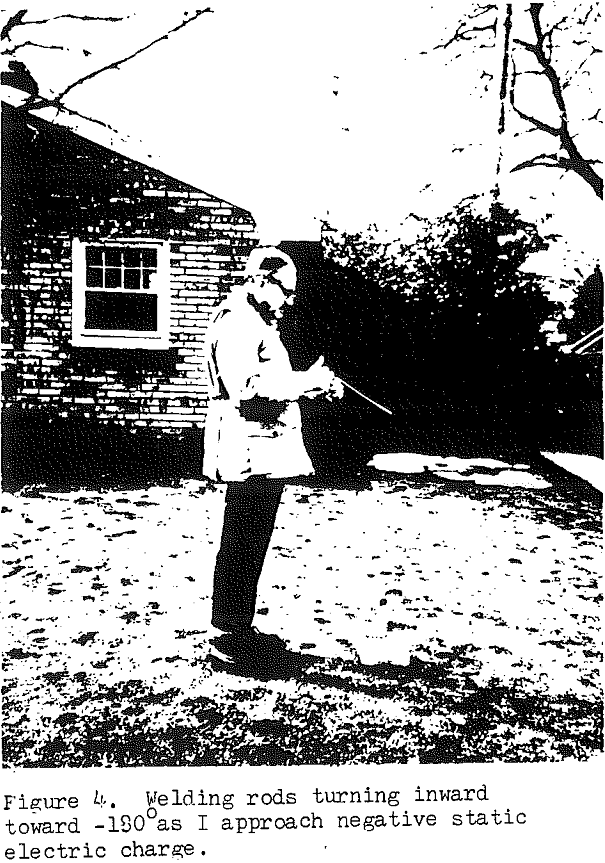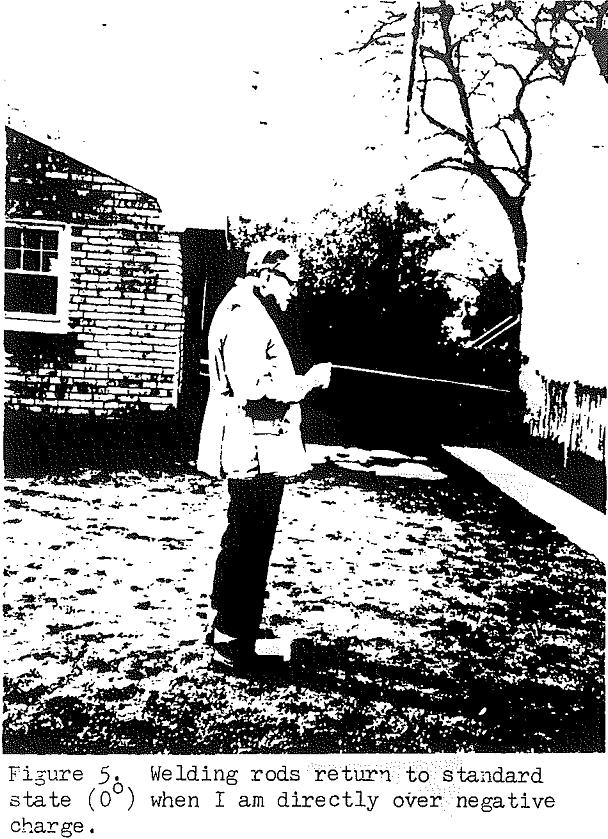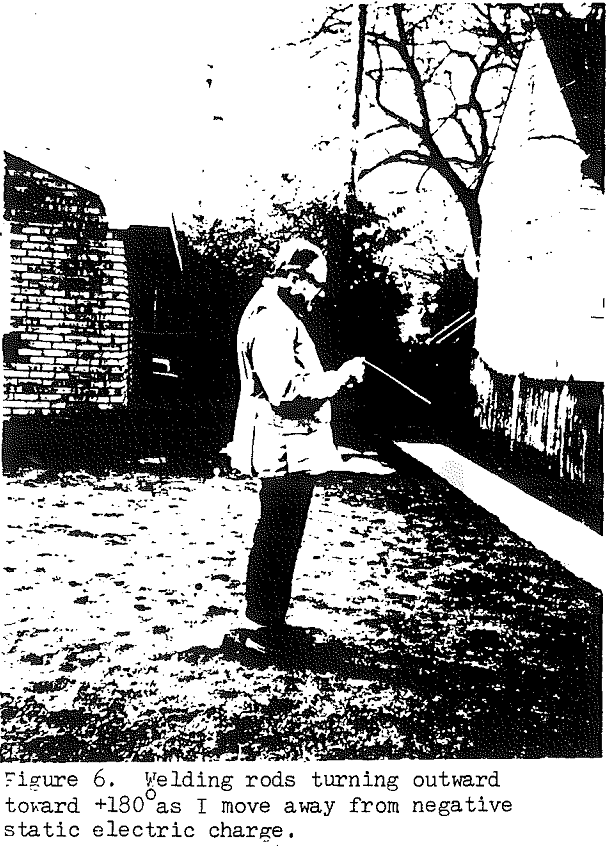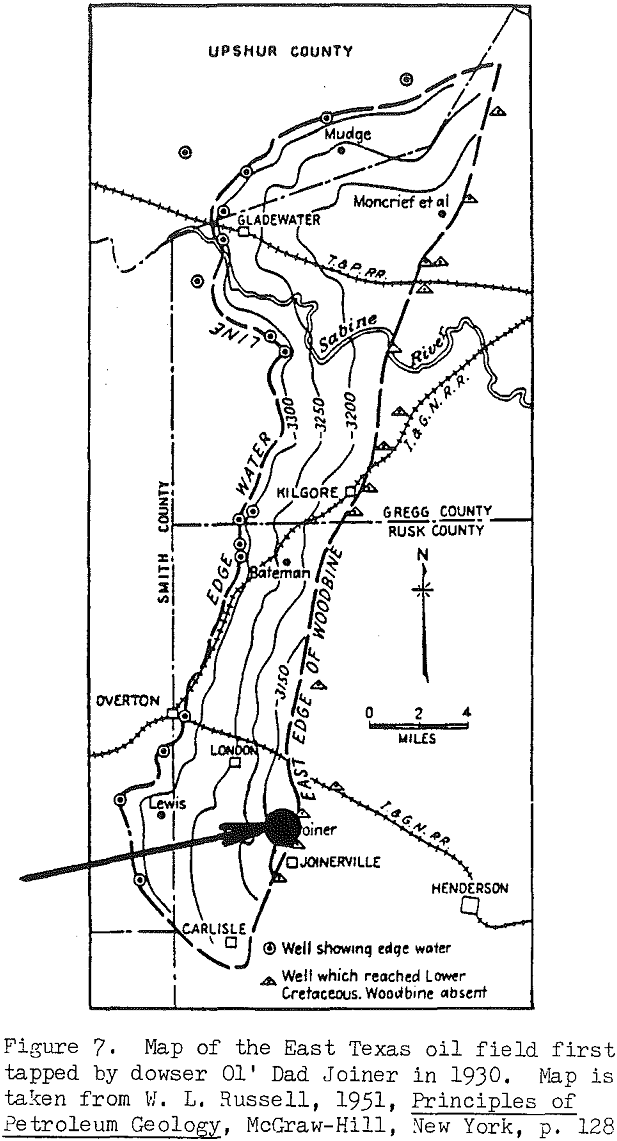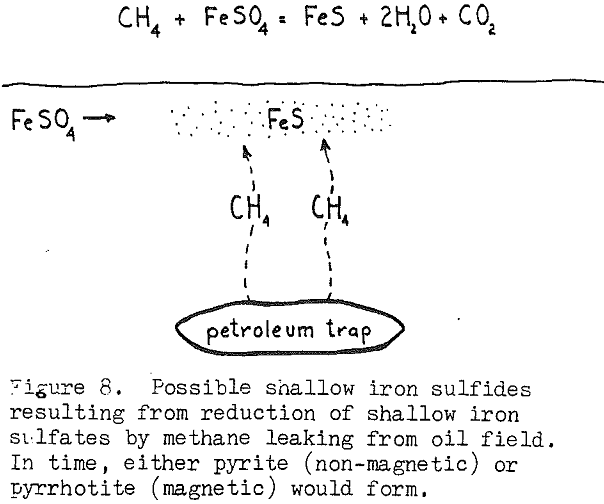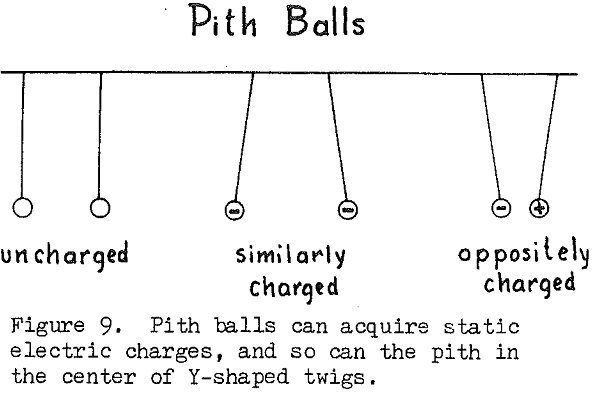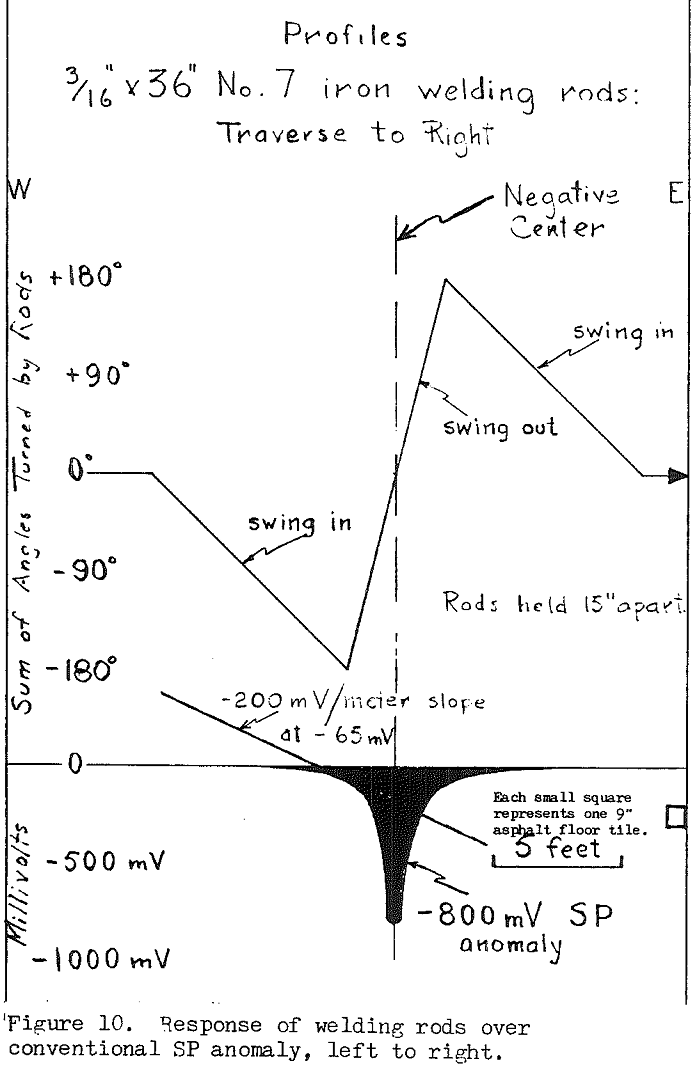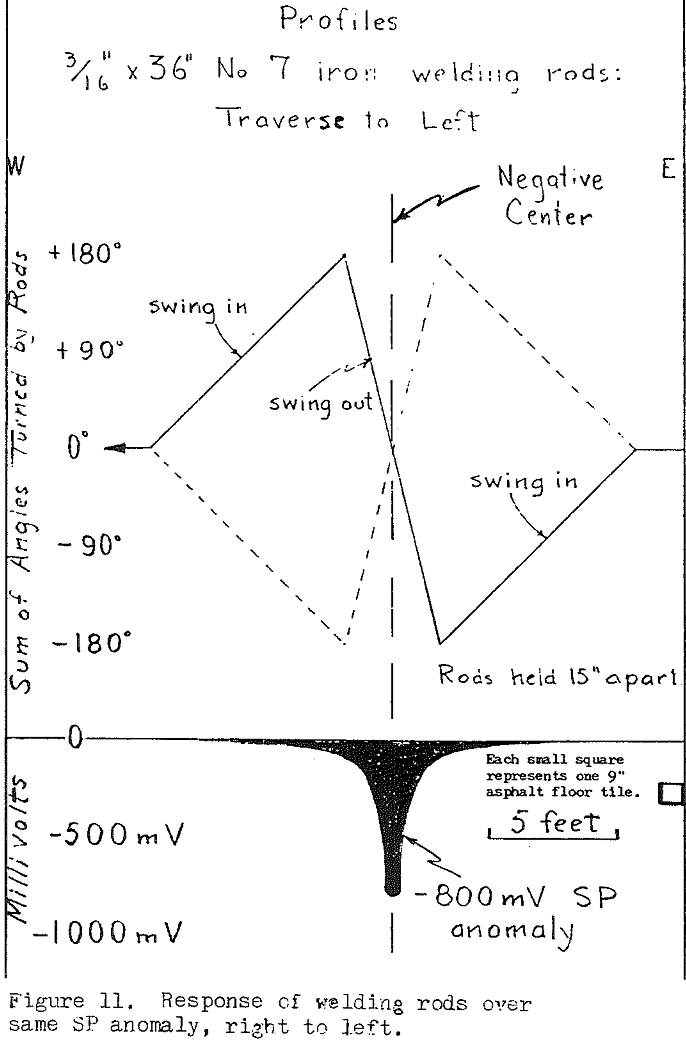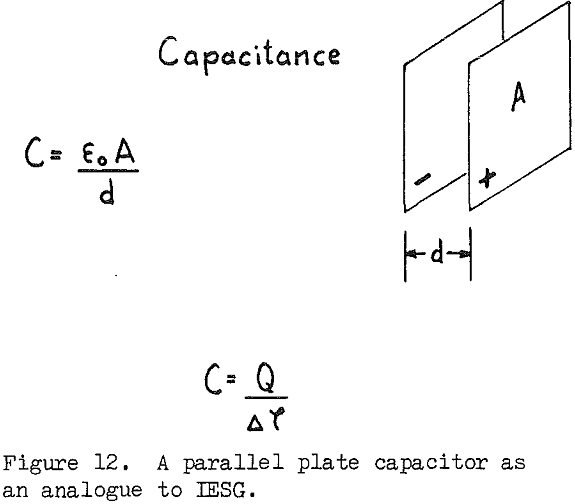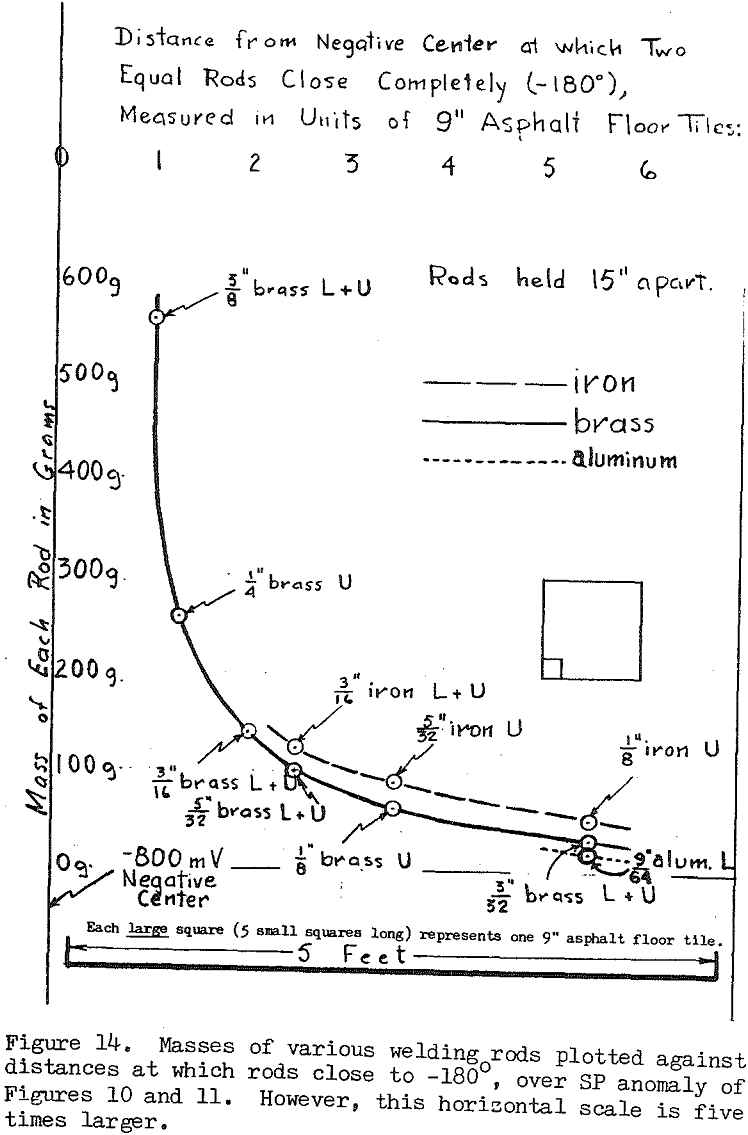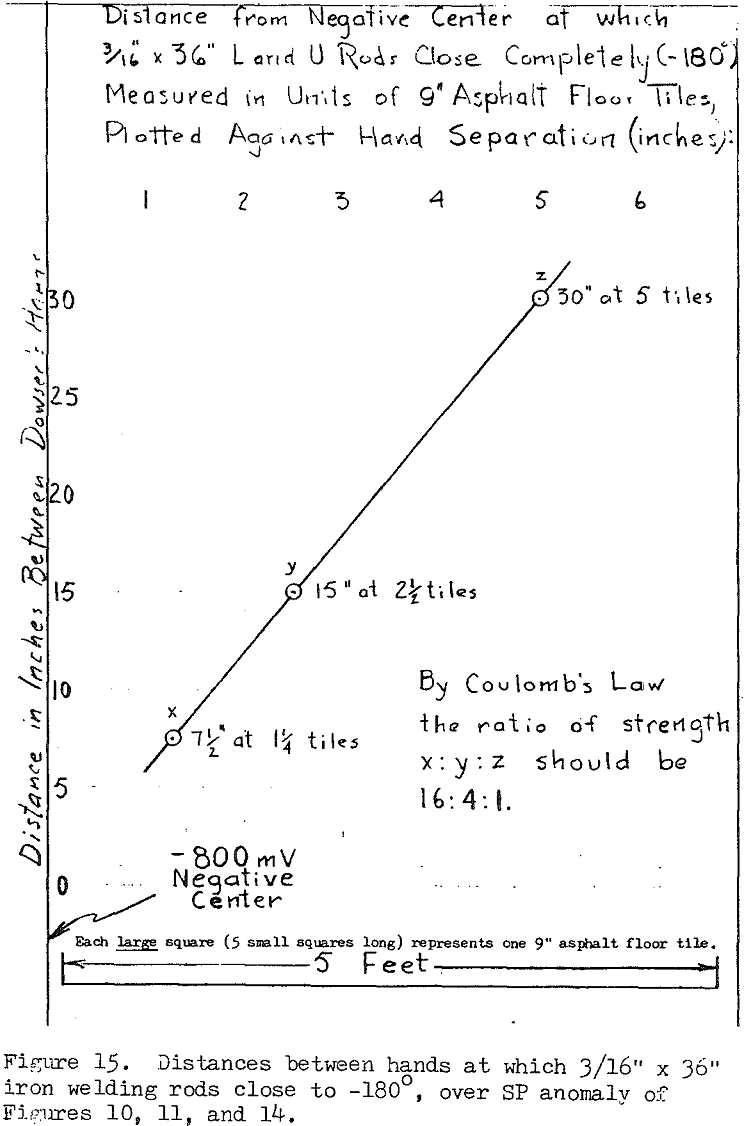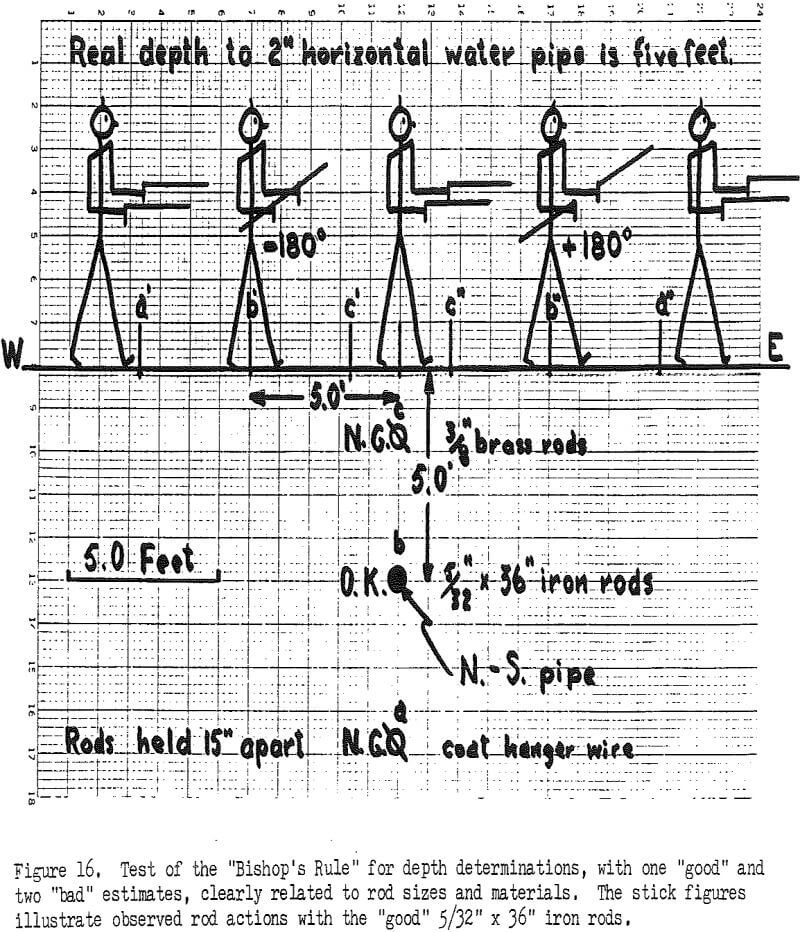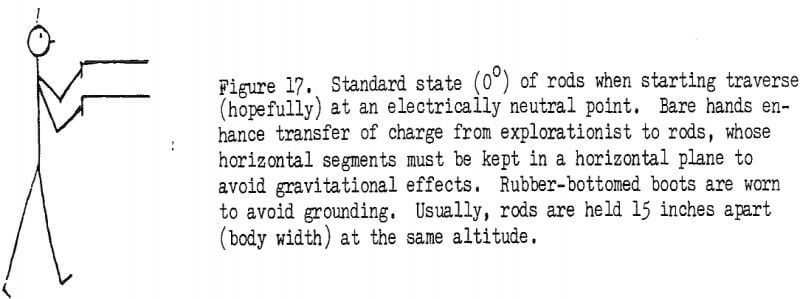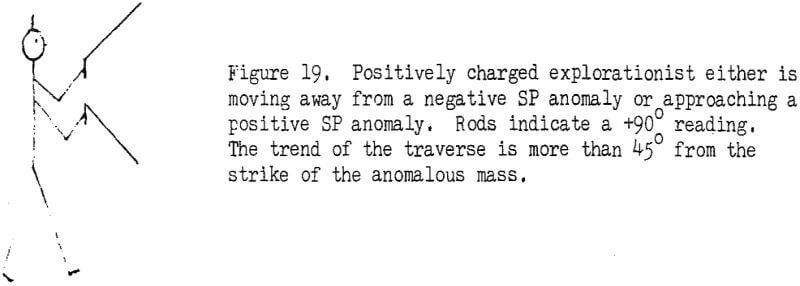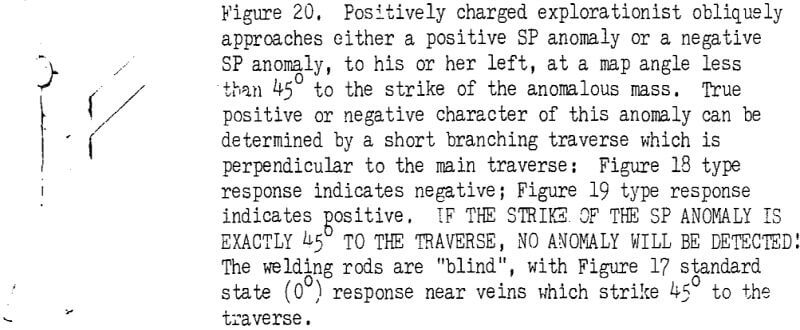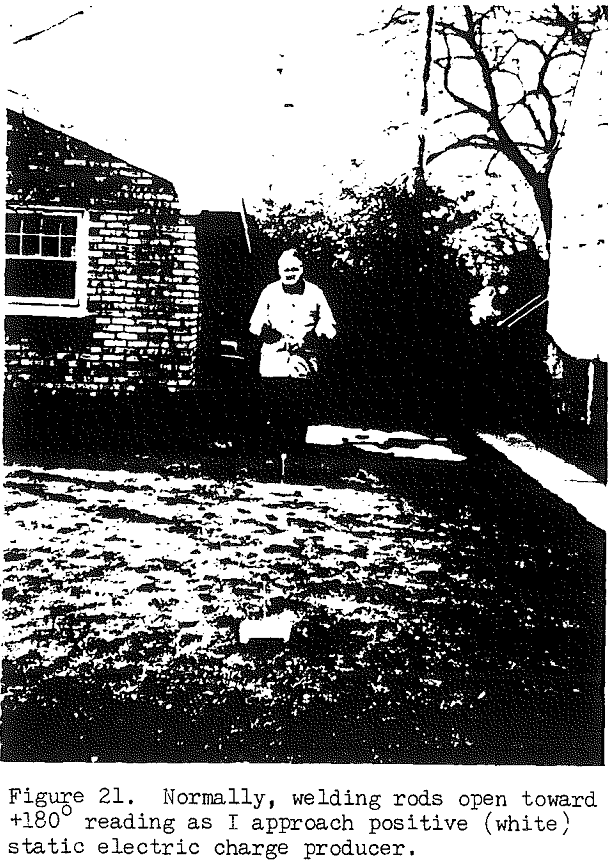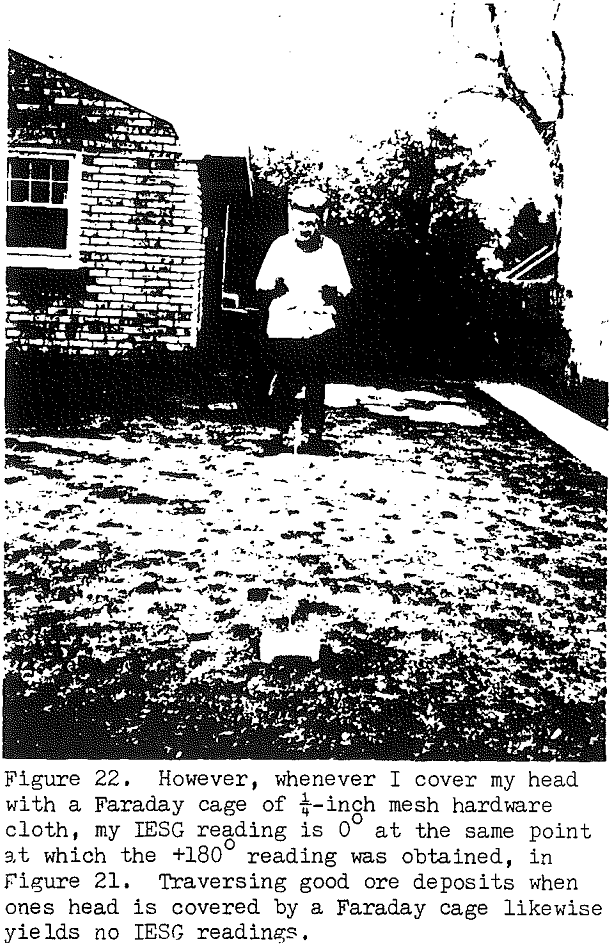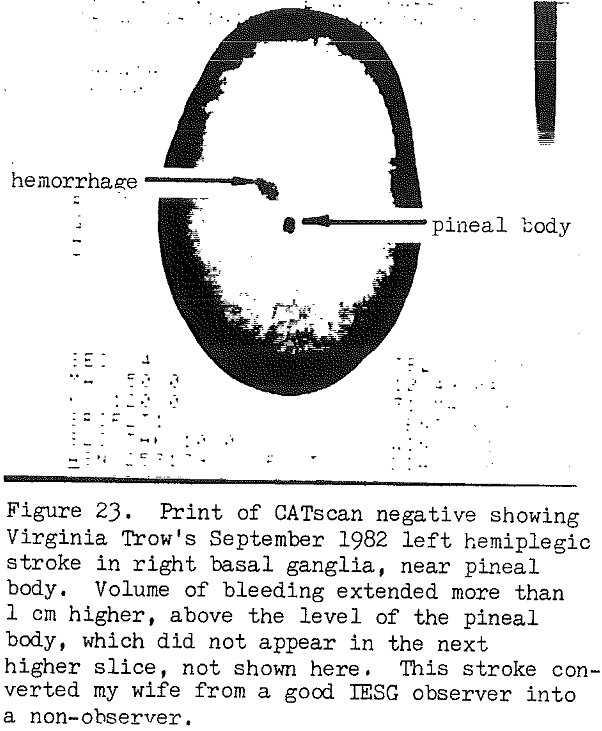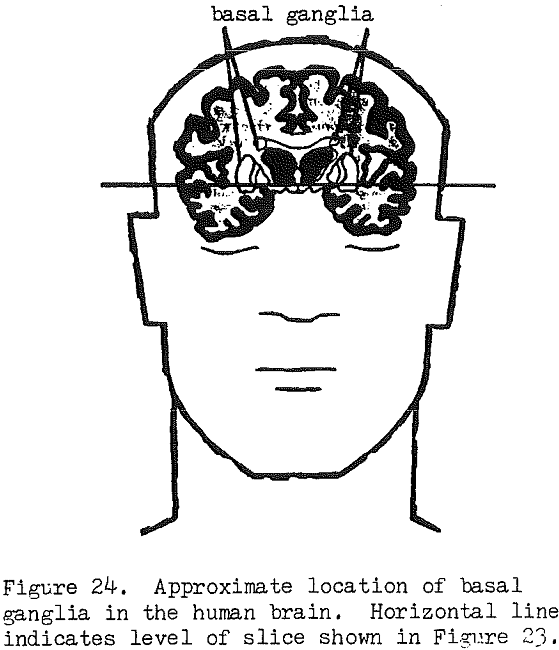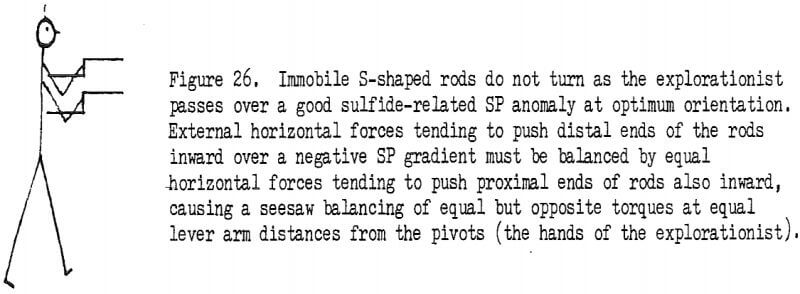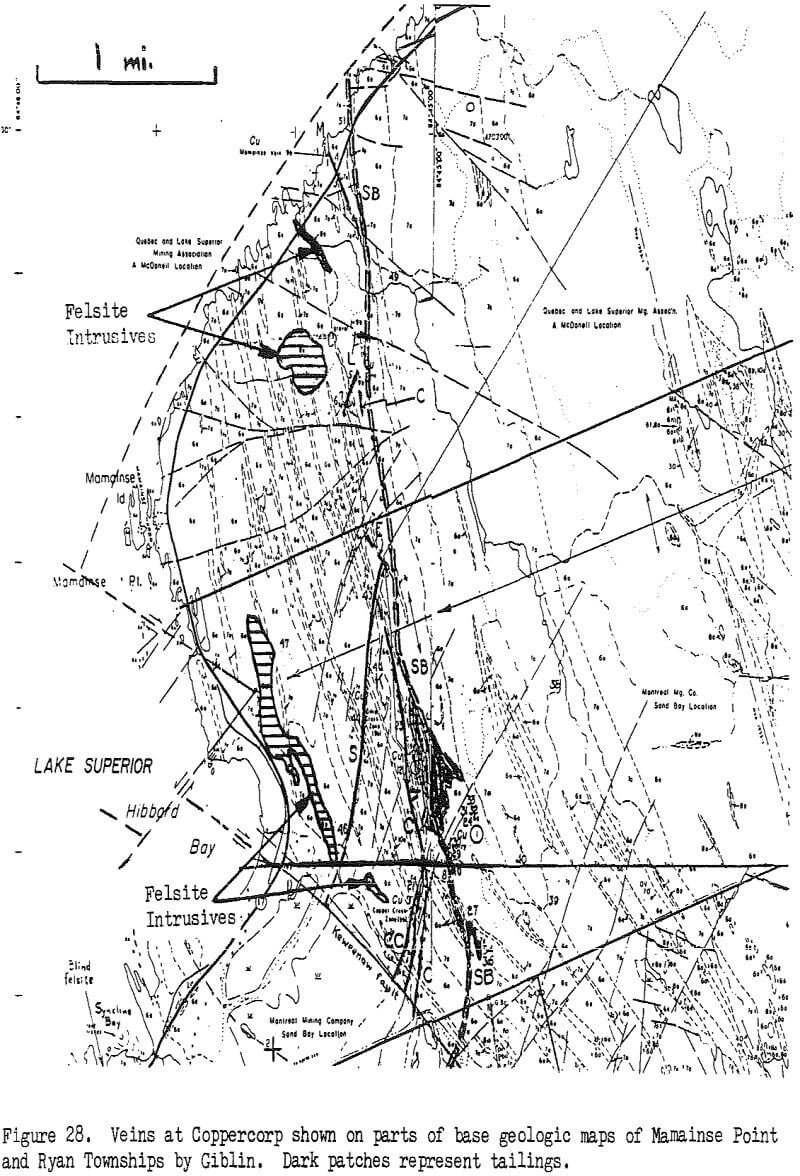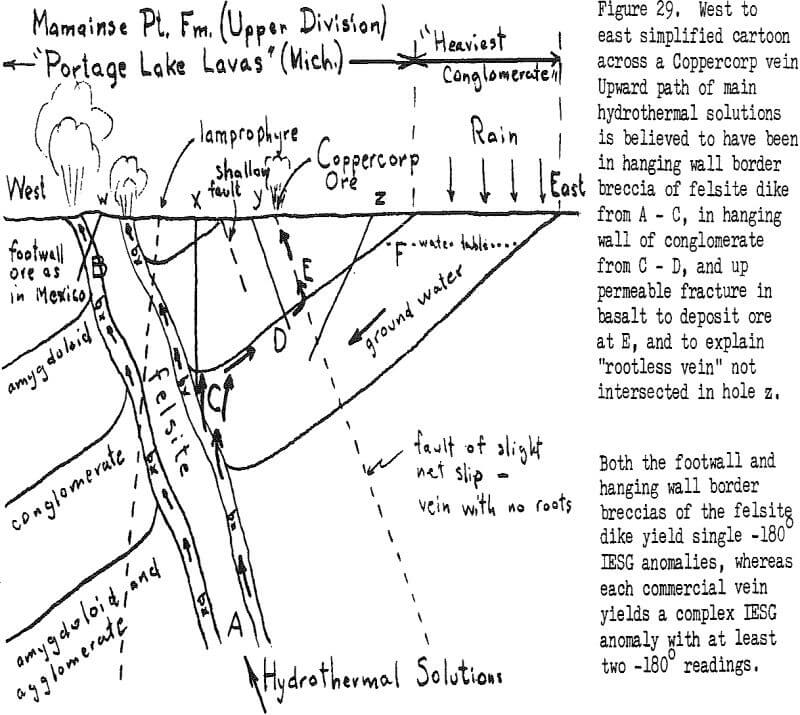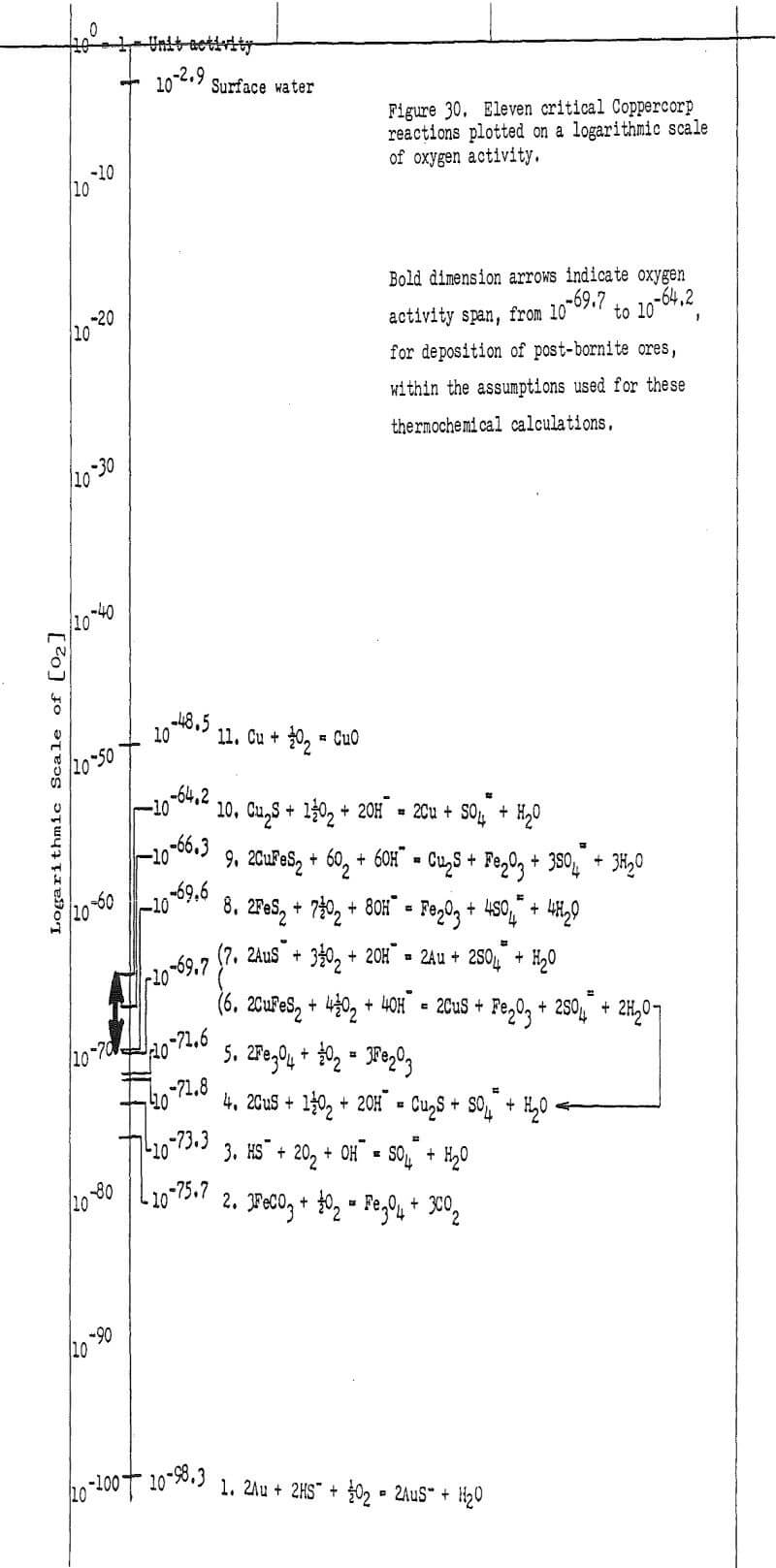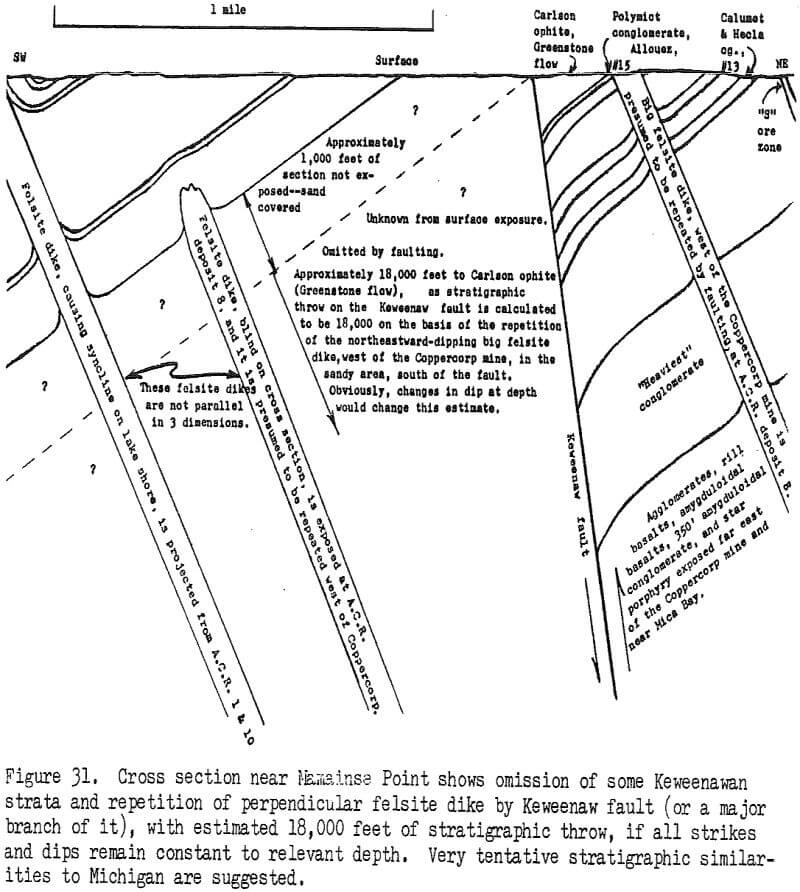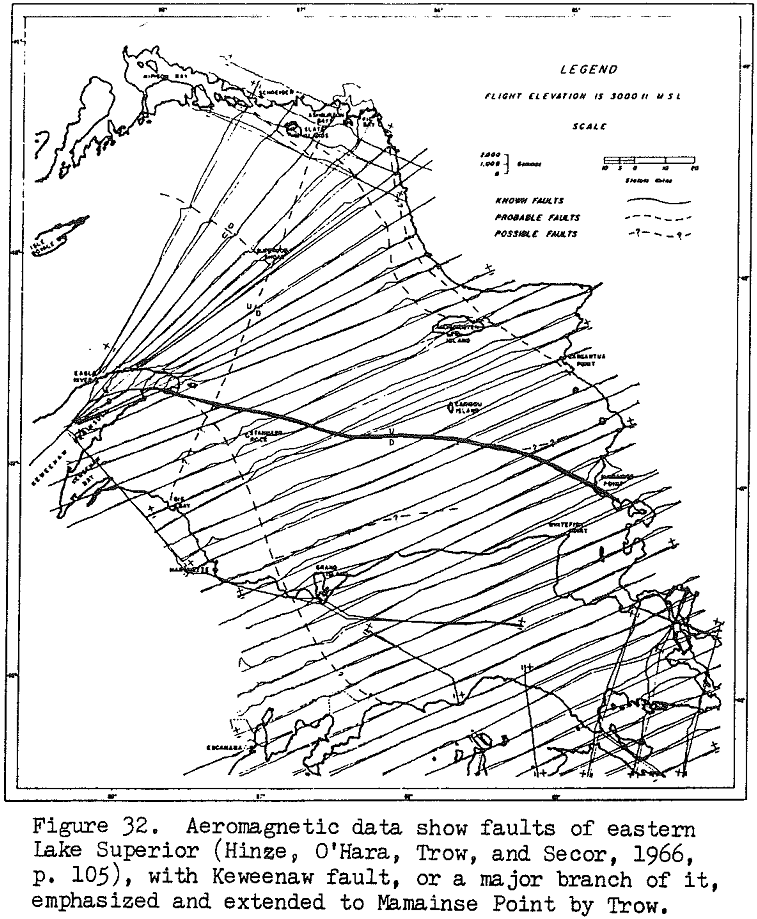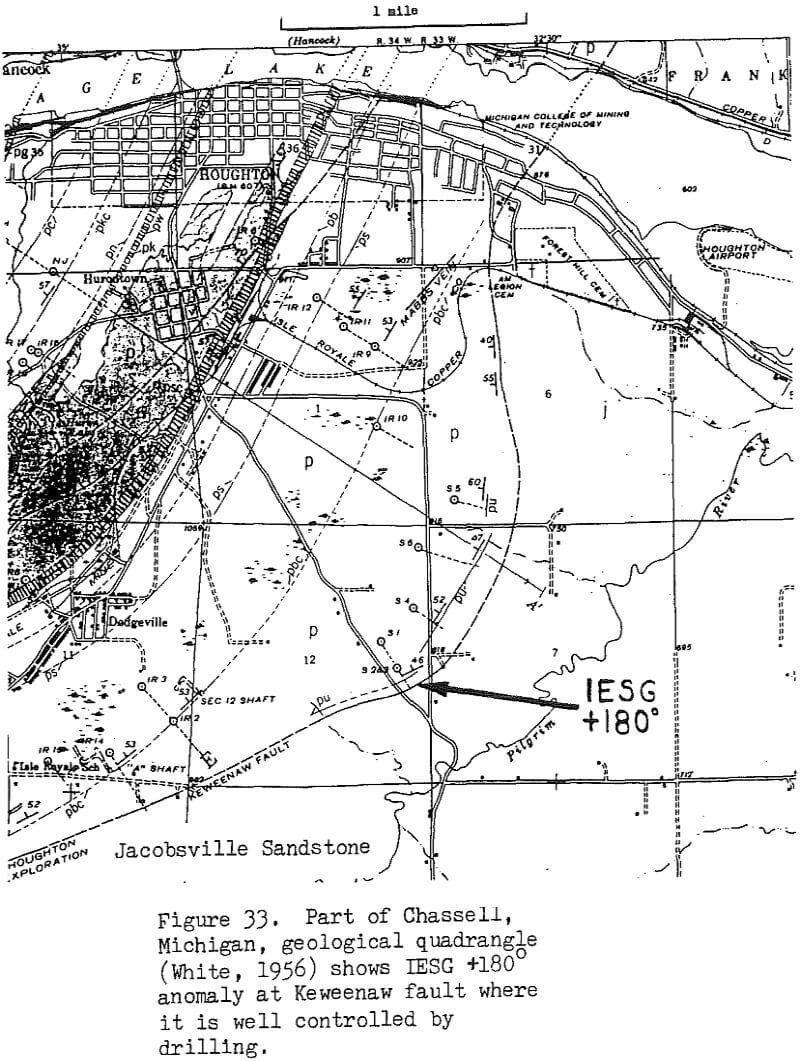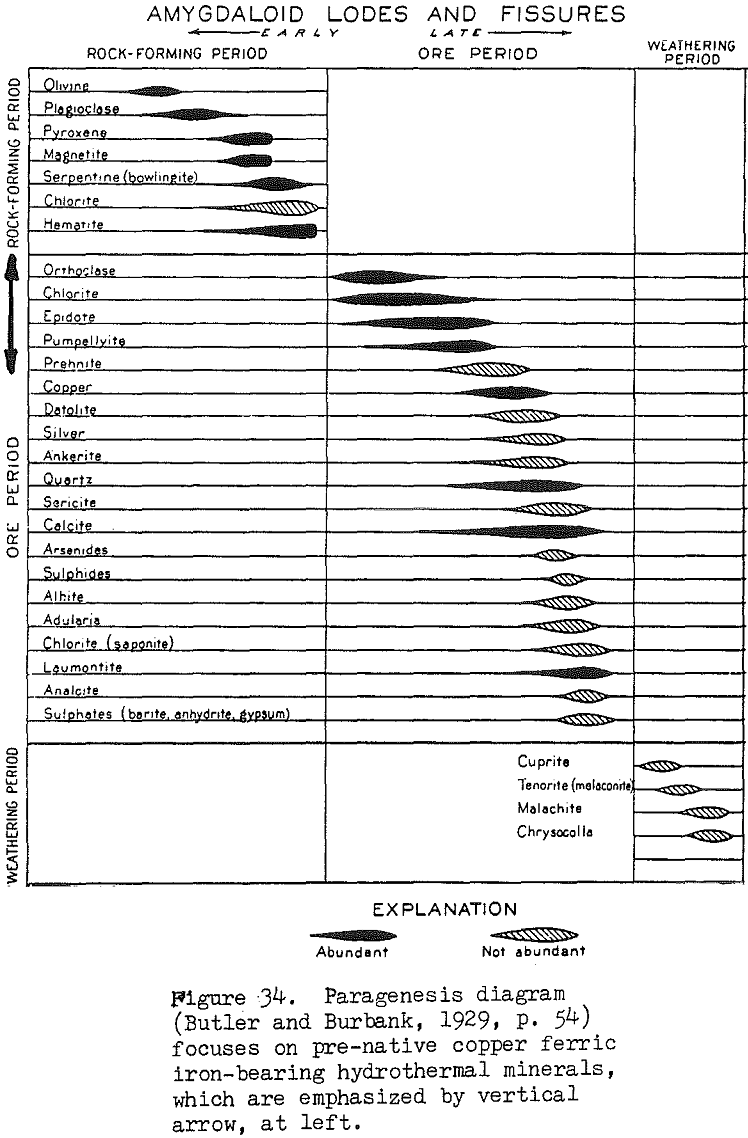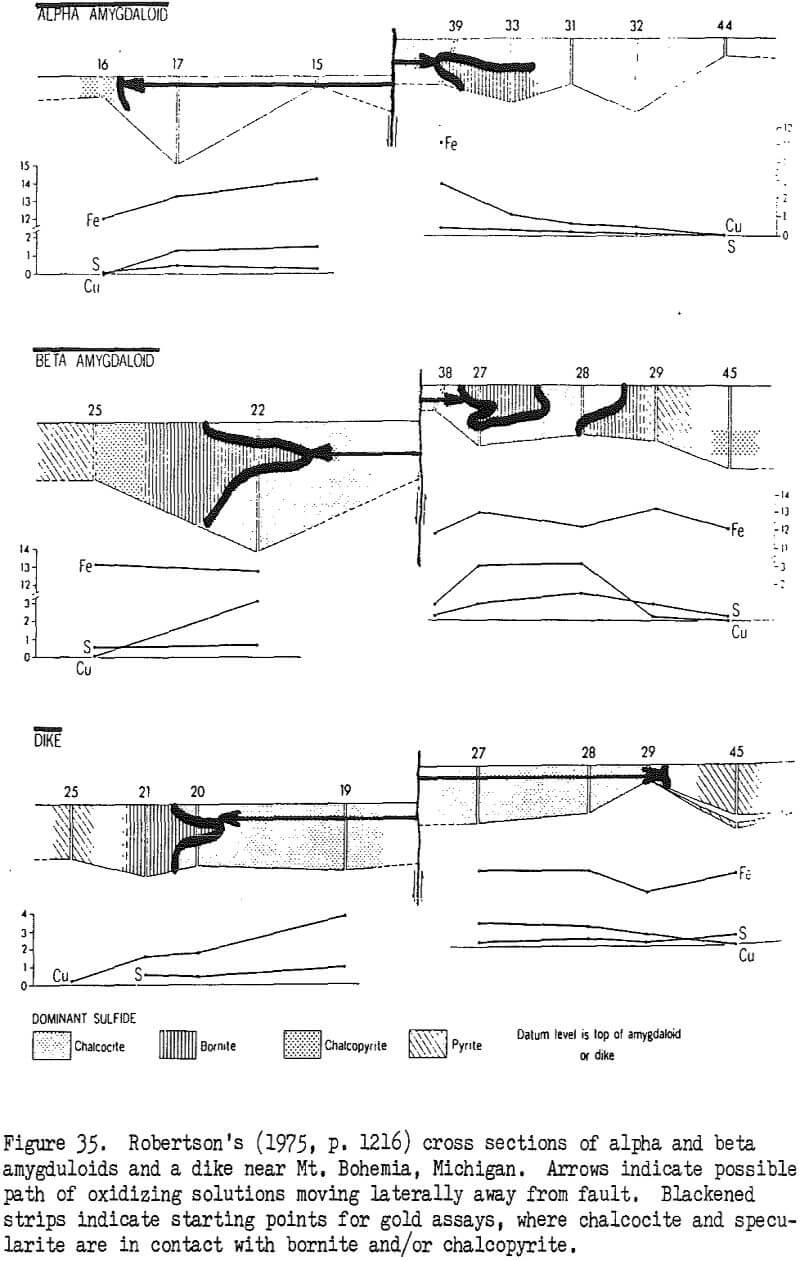Table of Contents
IESG is an inexpensive but valuable component of our interdisciplinary integrated effort to discover and to understand hydrothermal convective plumbing systems, with originally hot, reducing, upward-flowing components yielding present negative IESG anomalies, and with originally cold, oxidizing, downward-flowing components yielding present positive IESG anomalies. This technique should facilitate the meaningful sampling of subtle Carlin-type invisible gold deposits, in another region (Basin and Range) of rift-related ores.
IESG Empirically Learned and Tested
Literature perusal revealed a wide spectrum of explanations including the religious, irreligious, psychic, and physical, but none seemed to correlate with all the observations which I had already made at mines. The most promising approaches appeared to be in classical physics, with some aspect of magnetism, electromagnetism, or electricity.
In 1949 in a major tome on dowsing, Tromp showed that a moving human body is comparable to a moving electrically charged body, and that as such a body approaches a conductor, capacitance increases and human skin potentials decrease. Also, Tromp suggested that the moving human is a charge in motion (a current) which therefore creates a magnetic field. In 1968, Tromp reported on the correlation between magnetic fields and cardiograph (human skin potential) readings. He also showed dowsing reactions in non-magnetic areas in Holland, where resistivity measurements revealed areas of low soil resistance.
For most dowsers and me, when the rods turn inward we are over a negative electrical slope, whereas when they turn outward we are over a positive electrical slope. Only three geologists of my acquaintance obtain exactly opposite motions. Inasmuch as an electrometer shows that my hands invariably are positively charged (from 1 to 8 volts) I wonder if those three opposite-style geologists have hands with negative charges.
As I traverse to the right, starting with the 0° standard state, the rods turn inward to a -180 anomaly at a point where the SP reading is -65 mV, but with a gradient of -200 mV/meter. As I walk over the negative center of the SP anomaly the rods return to the 0° standard state, over the zero SP gradient, but the rods then turn outward for a + 180° as I continue to the right over a positive SP gradient on the right flank of the negative SP anomaly. Eventually, the rods resume the 0° standard as I continue farther to the right. The -180° and +180° points are equidistant from the SP negative center, suggesting a simple geometry for the buried anomalous mass, such as a thin horizontal cylinder or a thin vertical sheet.
It is logical that if capacitance is involved in IESG, then anything that could change capacitance of the system could change sensitivity. Figure 14 plots horizontal distance (x) against mass (y) of various diameters and materials of rods over my basement SP anomaly. With regard to a given mass, iron is more sensitive (less capacitance) and detects an anomalous body at a greater distance (lower gradient) than brass, which in turn probably is more sensitive than aluminum, in conformity to those metals relations of conductivity to mass.
The Bishop’s Rule, enshrined by some dowsers, is really a precursor to our “half-width rule” widely used for depth determination in gravity and magnetics during the 1940’s and 1950’s. Unfortunately, IESG does not measure electrical intensity, but a gradient. Using the Bishop’s Rule, light dry-cleaner’s hanger wire rods imply that the copper pipe is at a depth of 8.7 feet, the 3/8″ by 36″ brass rods imply that the pipe is at a depth of 1.7 feet, whereas only the 5/32″ by 36″ iron rods give the “good” depth of 5.0 feet (after much trial and error in groping for the right rods).
Regrettably, IESG does not identify the material of anomalies, as it is just a passive potential field method which identifies electrical irregularities. IESG can locate negative SP anomalies such as those associated with sulfide ore deposits, mineralized faults, sulfides above hydrocarbon reservoirs, graphite beds, long-buried metal water mains, long-buried armored electric cables, long-buried metal sewer pipes, galvanized culverts, electrofiitration (streaming potential) related to ground water, etc. IESG can locate positive SP anomalies associated with faults down which oxidizing solutions have coursed, abandoned Pleistocene.
The crucial correlation is between the orientation of ones head and the orientation of the vein, and not between the orientation of ones body and the orientation of the vein. The ore vein does not turn the rods directly, but the brain triggers changes in the human body and limbs which activate the rods, after the brain had been stimulated. One last minor point: IESG is really an airborne method, with sensors in ones head and not in ones feet. This should be remembered when one plays with depth determination programs such as the Bishop’s Rule.
Southwest-dipping basalts of the Keweenawan Upper Division of the Mamainse Point Formation (Annells, 1973), essentially correlated with Michigan’s Portage Lake Lava Series, are intruded by essentially perpendicular northeast-dipping felsite dikes and chalcopyrite-bornite-chalcocite-native copper veins. These basalts and felsites are in turn cut by faults, including the major northwest-striking Keweenaw fault (which identification I shall fortify soon). Underground, as one proceeded northward away from the fault, one generally saw ores change from native copper, to chalcocite plus specularite, to bornite and chalcopyrite, suggesting that abundant oxygen in the fault moved northward to oxidize the iron and sulfur of chalcopyrite and bornite.
The map location of veins up-dip in the basalt (northeastward) from the felsite implies a zigzag upward path for hydrothermal solutions, as suggested in the oversimplified cartoon cross section. At the surface, negative IESG anomalies for the border breccias of the felsite dike imply that these permeable breccias served as conduits for upward-moving hydrothermal solutions. However, before reaching the surface, these rising solutions encountered a thick permeable conglomerate underlying the basalts.
If the major epigenetic ore zones, deposited by hot ascending chemically reduced solutions, yielded mainly -180° IESG anomalies, it is a logical induction that the wide +180° anomaly of the Keweenaw fault was created by contemporaneous cold descending chemically oxidized solutions, which moved laterally from that fault to cause the zoning of the copper minerals, with native copper closest to that fault and chalcopyrite and bornite farthest from it.
The Keweenaw Fault from Ontario to Michigan
The Keweenaw fault south of the Coppercorp mine eliminates a lot of geologic column, as it does in Michigan. Fortunately, in Ontario the repetition of a felsite dike perpendicular to basalt bedding enables one to calculate from descriptive geometry an estimated stratigraphic throw of approximately 18,000 feet.
In our aeromagnetic survey of eastern Lake Superior a fault stretching eastward from Keweenaw Point, but its eastern end, near the Ontario shore, is marked by question marks because of ambiguity resulting from a lack of magnetic contrast where the fault passes through basalts on both sides, as compared to where basalt on one side contrasts with sandstone on the other.
Normally, one might expect hydrothermal copper deposits to consist of chalcopyrite, bornite, etc. However, the situation at Coppercorp suggests that oxidizing water, when mingled with typical hydrothermal water, can oxidize sulfur and iron, so that chalcopyrite and bornite give way to chalcocite plus specularite, and that the chalcocite then gives way to native copper, with progressive oxidation.
Bleached Basalt Flow Tops Did Not Lose Ferric Iron by Reduction
Commonly it is believed that the now bleached, originally hematitic, flow tops of native copper lodes were robbed of their iron by an oxidation-reduction reaction which reduced iron to soluble ferrous form as native copper was deposited. As early as 1871 the same year that he helped to found the AIME, Pumpelly recognized that the pre-copper associated minerals were oxidized. This chemical astuteness led Pumpelly to the structural disaster of proposing that the copper ores had been deposited by descending oxidized solutions. Structural situations observed since his time relating to permeable zones and barriers to circulation have shown clearly that the lodes were deposited by upward-migrating solutions.
Gold in Some Chalcocite-Specularite Ores
The invisible gold occurs mostly in chalcocite-specularite ore, with the single exception of the adit-level sample, with peacock ore of chalcopyrite-bornite interfingered with chalcocite-specularite ore. The following ore types appear to be non-auriferous: native copper, pure chalcopyrite and bornite, and a lot of chalcocite-specularite distant from the contact with chalcopyrite and bornite. These observations can be interpreted in terms of the deduced logarithmic oxygen-activity scale. Presumably, as soon as covellite forms by reaction 6, that could immediately be transformed into chalcocite (pseudomorphously?) .
I am not optimistic about gold in the White Pine chalcocite ore in Ontonagon County, as apparently such chalcocite was deposited by rising copper-bearing solutions where they encountered petroleum and pyrite of the Nonesuch Shale, a highly reducing environment. Presumably, such solutions were already stripped of any possible gold in the “boiler room”, where reducing and oxidizing solutions mingled and reacted before ascending.
Recommendations
With regard to IESG, human and non-human aspects remain as fertile fields for further research. However, psychologists statistical tests should be avoided like the plague. This is not a matter of psychology; it is a matter of elementary physics. To require as a proof of gravity that Sir Isaac Newton should have been struck by at least 190 of 200 apples dropped on his head would not have been science, it would have been applesauce (and a headache for Sir Isaac). Rather 1) IESG response should be compared to SP response at several more test sites. 2) Physiological- neurological testing should explore the static electric fields surrounding humans, and explore the distortions of such fields upon encroachment of “foreign” static electric charges, to see what attractions and repulsions actually turn the rods. 3) Brain PETTscan mapping should illuminate appropriate brain centers involved in IESG under the absence and presence of nearby “foreign” static electric charges. 4) Instruments should be developed a) from one electrometer for inductively detecting total static electric intensity related to ore, and b) from two electrometers for inductively detecting IESG-style gradients (dv/dx) in order to bypass the variable human electrical components of the present IESG circuit, to create more reproducible quantitative data. Even helicopter-borne instruments (Aerodowz) might be attempted.
